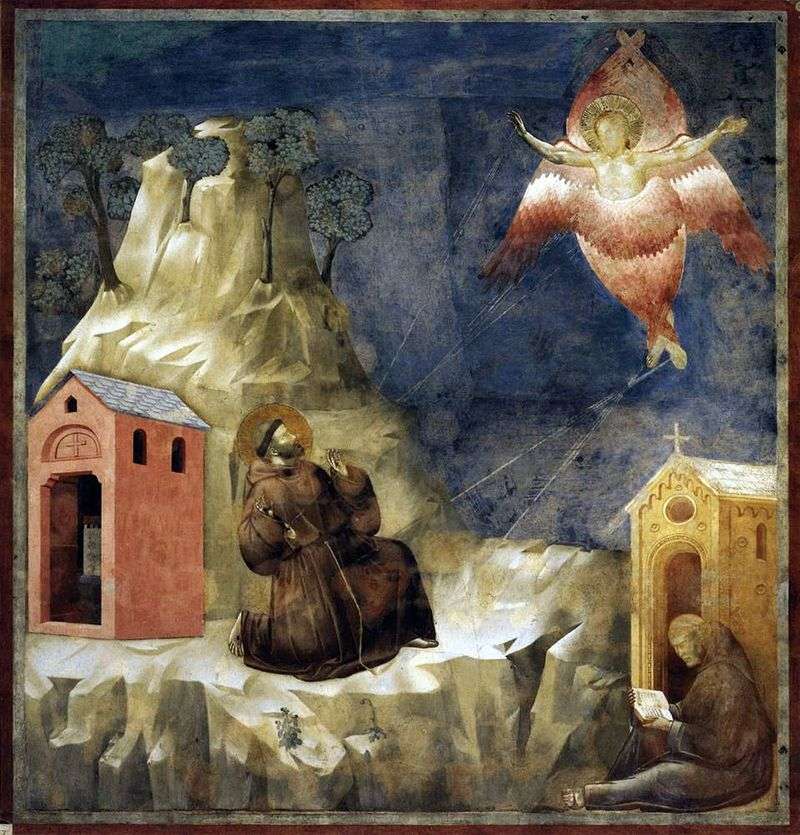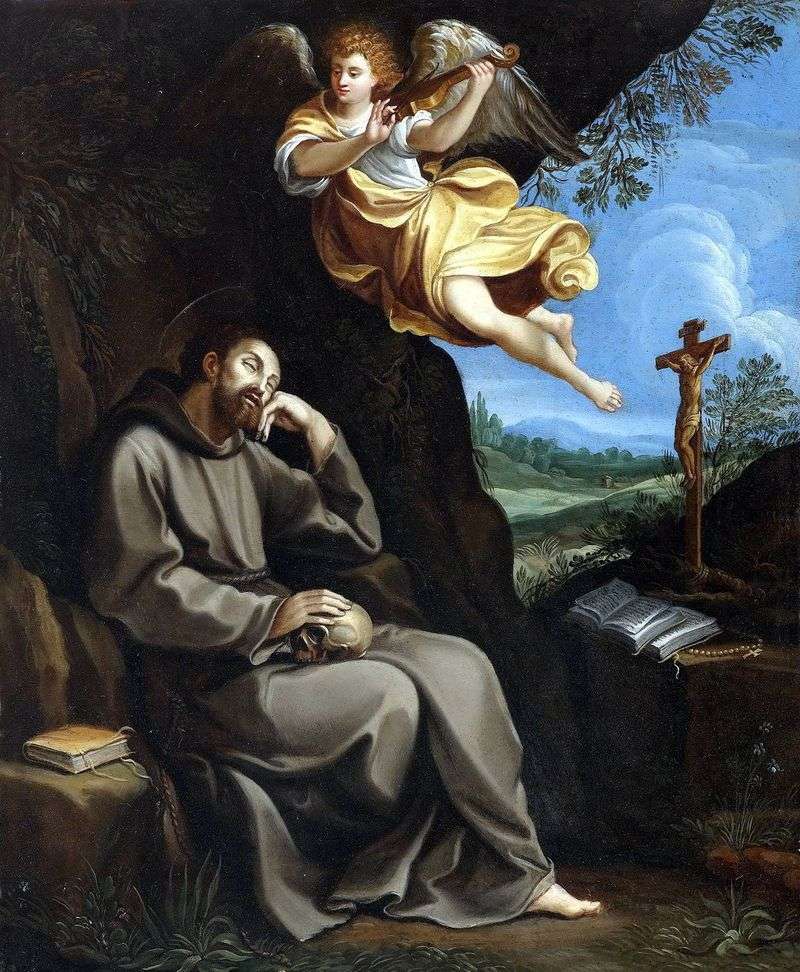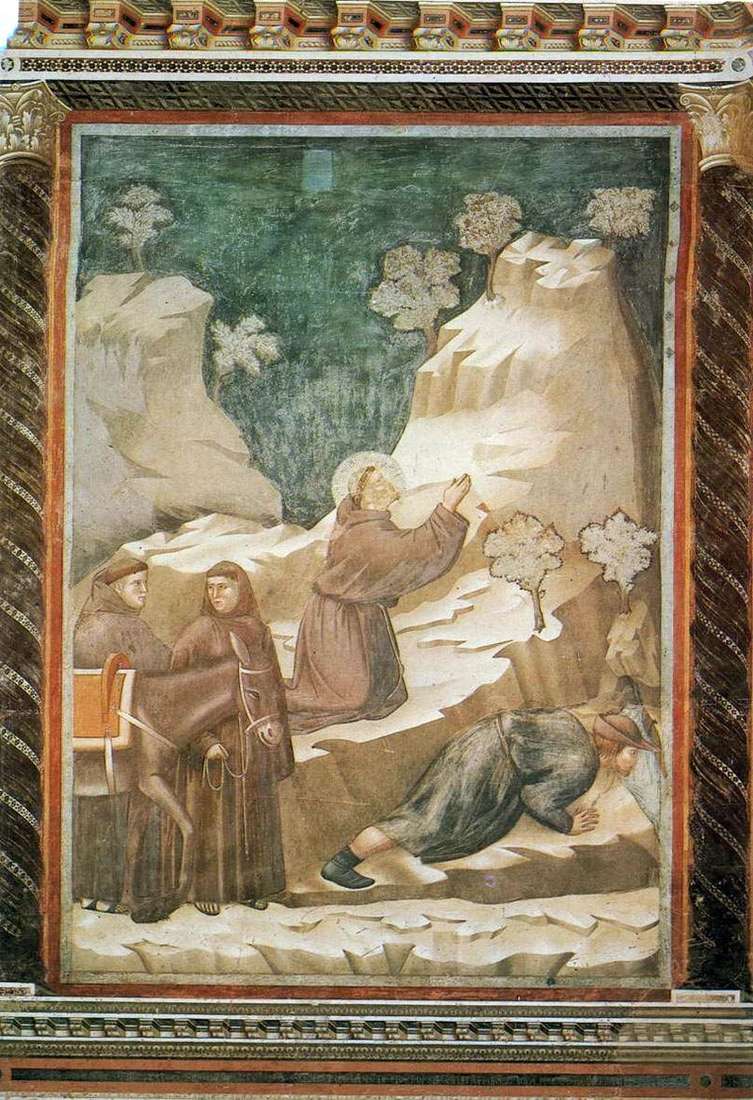
The Louvre painting is written on a blackboard and comes from the church of San Francesco in Pisa. In the Louvre, she was in 1814, along with paintings by Cimabue, Fra Angelico and others, collected in Tuscany by Baron Vivan-Denon. The central image in the picture is attributed to Giotto himself.
Little life scenes are written by another hand, most likely someone from the assistant masters. The main stage shows the way out to the monumentality of the new sense, to the awareness of the three-dimensionality of the space depicted. The painting depicts one of the most revered Catholic saints, St. Francis of Assisi – the founder of the monastic order of the Franciscans.
His pictorial image meant a lot to the Order, since St. Francis of Assisi was considered not only the successor of Christ, but also his living incarnation, which took over the stigmata from the Savior’s wound. This plot was often varied in later painting.
 Saint François recevant des stigmates, avec trois scènes de la vie – Giotto di Bondone
Saint François recevant des stigmates, avec trois scènes de la vie – Giotto di Bondone San Francisco, recibiendo estigmas, con tres escenas de la vida – Giotto di Bondone
San Francisco, recibiendo estigmas, con tres escenas de la vida – Giotto di Bondone Stigmatization of St. Francis by Giotto
Stigmatization of St. Francis by Giotto Saint Francis and the Angel by Guido Reni
Saint Francis and the Angel by Guido Reni St. Francis exudes water from the rock by Giotto di Bondone
St. Francis exudes water from the rock by Giotto di Bondone The Bliss of St. Francis by Michelangelo Merisi and Caravaggio
The Bliss of St. Francis by Michelangelo Merisi and Caravaggio Scenes from the life of St. Nicholas by Fra Beato Angelico
Scenes from the life of St. Nicholas by Fra Beato Angelico Virgin and Child on a throne surrounded by angels by Chenny Di Pepo
Virgin and Child on a throne surrounded by angels by Chenny Di Pepo